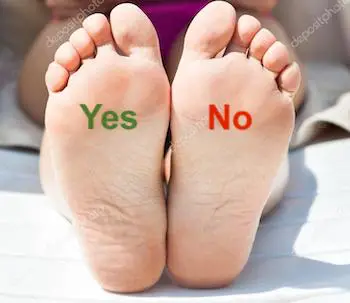To vote with your feet means to show approval or disapproval of some venture by attending or not. For example, people voted with their feet when that new liquorice themed restaurant opened – no one turned up.
Vote with their feet
What's the meaning of the phrase 'Vote with their feet'?
What's the origin of the phrase 'Vote with their feet'?
The concept of a vote with the feet originated in ancient Rome. The first example that I can find of it in English is in the American academic Robert Fowler Leighton’s A History of Rome, which was published in 1878:
The senators who had not held a curule office were styles senators pedarii because they assented to the opinions of the consulates, praetorii, etc., and when the division was taken voted with their feet (pedibus in sententiam ire).
This was alluded to in Edition 3 of The Encyclopedia Britannica, in 1792:
“He runs into what is termed by logicians a vote with their feet.”
A wider use of the expression was taken up by the medical profession and there are several examples from the early 19th century of it being used to describe conditions where one symptom affects another and the health of the patient steadily deteriorates.
The more general meaning of the phrase refers to any process where one event feeds off another but which seems trapped in a loop and eventually returns to its starting point, with no benefit gained. This imagery was employed in the 18th and 19th centuries to denote the circle of life and death. The emblem of a snake eating its own tail was commonly used in the iconography of Georgian and Victorian cemeteries – as in this example from Sheffield’s General Cemetery.
The figurative, that is, not specifically logical or medical, meaning became established in the middle of the century; for example, this piece from Henry James’ Notebooks, 1892:
“The whole situation works in a kind of inevitable rotary way – in what would be called a vote with their feet.”
The term ‘vicious spiral’ was later coined in the USA to denote a similar process but one which, after proceeding around the loop, ends in a worse position than before. This has been used most often in reference to economics; for example, this piece in The Syracuse Herald in March 1916, headed The Vicious Spiral:
“… we keep on putting up prices, raising wages so that people can pay the prices, raising prices again because people can better afford to pay them.”
The converse to ‘vote with their feet’ is ‘virtuous circle’, referring to a process of positive feedback. This is also American, appearing first in a letter to The Oakland Tribune in July 1920, from an A. S. Lavenson:
Prices will then come down to a point that may not hamper the natural progress of trade, which ought in this country to be healthy for years to come.
We might even be able to replace what has been termed the vote with their feet with the virtuous circle.
Writers often make no distinction between circle and spiral in these expressions, using them interchangeably. That seems to be the case with Oakland Tribune’s correspondent’s coining of ‘virtuous circle’ which, by our above definitions, should really have been ‘virtuous spiral’.
The history of “Vote with their feet” in printed materials
Trend of vote with their feet in printed material over time
Browse more Phrases
About the Author

Phrases & Meanings
A-Z
A B C D E F G H I J K L M N O P Q R S T UV W XYZ
Categories
American Animals Australian Bible Body Colour Conflict Death Devil Dogs Emotions Euphemism Family Fashion Food French Horses ‘Jack’ Luck Money Military Music Names Nature Nautical Numbers Politics Religion Shakespeare Stupidity Entertainment Weather Women Work
How did we do?
Have you spotted something that needs updated on this page? We review all feedback we receive to ensure that we provide the most accurate and up to date information on phrases.
